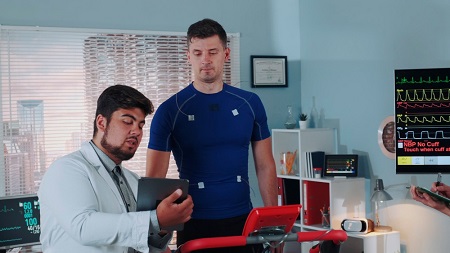Common Tests To Diagnose Heart Disease
 Heart disease is a term that strikes fear in the minds of people. While it is a serious medical condition, it is by no means fatal and with the proper diagnosis and care, those with cardiac conditions are able to recover from the disease and go on to live normal lives. The first step in treatment is diagnosis.
Heart disease is a term that strikes fear in the minds of people. While it is a serious medical condition, it is by no means fatal and with the proper diagnosis and care, those with cardiac conditions are able to recover from the disease and go on to live normal lives. The first step in treatment is diagnosis.
Diagnosing Heart Disease
Heart disease is a term used to cover a variety of cardiac ailments. Because of the types of diseases, several tests are used to diagnose the problem. After an initial examination and a study of a patient’s medical history, a cardiac specialist will order tests to be conducted to accurately define the nature and severity of the problem so that the most effective treatment protocols can be used. Among the most common of these are:
- Blood tests: When the heart muscles have been damaged, due to a heart attack or for other reasons, various substances are released by the muscles into the bloodstream. Blood tests to measure the volume and type of substances released can confirm heart damage and how extensive it is. Tests may also be done to measure other markers in the blood that relate to other health factors that may affect the heart condition. The blood sample is generally taken from the arm.
- Electrocardiogram: An electrocardiogram (ECG) measures and records the heart’s electrical impulses. This will tell the cardiologist if the heart is beating too fast or too slowly and if the heartbeat is irregular. Sensors to measure the electrical impulses are placed on the patient’s chest, arms and legs. The sensors are connected to an ECG machine which records the impulses and provides a printout for the doctors to examine.
- Exercise stress test: This is a variation of the ECG. The sensors are placed on the body and the patient is told to walk or run at a specified pace on a treadmill. The ECG measures the functioning of the heart when the patient is active.
- Echocardiogram: This test uses ultrasound to give the cardiologist a picture of the heart. The procedure uses reflected sound waves to create an image of the heart in real-time so that the functioning of the valves and chambers can be studied to identify problems that affect the pumping of blood.
- Magnetic resonance imaging: Magnetic resonance imaging (MRI) uses very strong special magnets and radio waves to create detailed images of the heart that are seen on a computer. Both still images, as well as moving pictures of the heart, can be obtained. In some cases, a special dye is injected into the blood to enhance the contrast of the images to provide a more detailed picture. This test will show the structure of the heart and how efficiently it is functioning.
Also Read: 7 Proven Ways to Live a Heart Healthy Life
- Coronary computed tomography angiogram: Also known as CCTA, this is a scan that is generally done when a patient is experiencing unusual cardiac symptoms. It is often used to diagnose coronary artery disease.
- Coronary angiogram: This procedure, also known as a cardiac catheterization is often done after a patient has suffered a heart attack or angina. A small tube is inserted into an artery in the arm, wrist or groin and is carefully moved to the heart. A dye is injected into the coronary arteries through the tube to enhance the image of x-rays that are taken to see the extent of blockage or clogging of the arteries and the efficiency of the pumping action of the heart.
- Holter monitoring: This is a form of EGC. The patient wears a portable device for a day or more so that the functioning of the heart during normal activities can be monitored and evaluated. This test is normally done if the cardiologist suspects that some irregularities are not showing up in the regular ECG.
- Nuclear cardiac stress test: This is also known as an ‘exercise nuclear scan’, ‘exercise thallium scan’ or a ‘dual isotope treadmill’ test. A harmless radioactive substance is injected into the bloodstream. When the substance reaches the heart energy is released. Special cameras are used to take pictures of the energy release which will tell the doctor how the heart is pumping and how much blood is flowing through it, both when resting and during activities. This test is very effective in diagnosing damage to the heart muscle.
These are among the most common tests used to diagnose heart disease and to subsequently monitor the effectiveness of a treatment protocol and the progress of a patient’s recovery. There are other tests and methods that a cardiologist may order to assist in the diagnostic process.
The earlier heart disease is diagnosed and the extent of the problem is evaluated, the sooner the right course of treatment can be prescribed. The earlier treatment is begun, the greater the speed and extent of the recovery. Cardiology is a very specialized field of medicine and it is essential that testing for cardiac disease is done at a multispecialty hospital with a dedicated cardiology department. The cardiologists, technology and treatment facilities available here will provide a patient with the comfort of knowing that he or she has received the most accurate diagnosis and is receiving the best possible treatment and care. This confidence that this generates is an effective tool in assisting the recovery. The simple rule to follow is that the best diagnosis and treatment can be found where the best cardiologists are located.
Exercise for Heart Patients
- Dec 22, 2022
